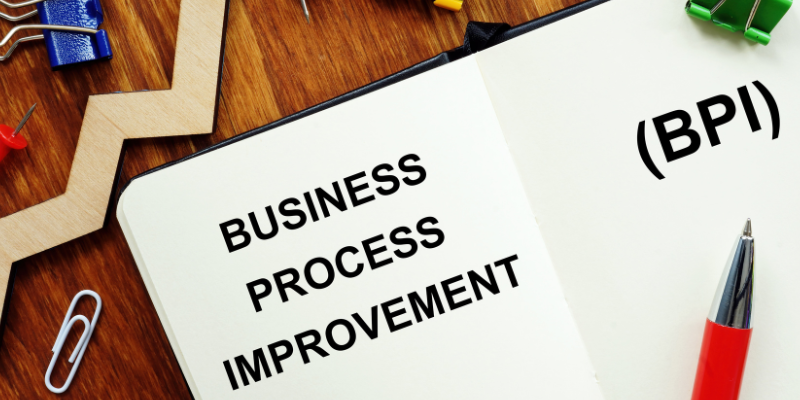In today’s competitive world, every business is striving to stay ahead. To succeed, it’s crucial not just to work hard but to work smart. This is where Business Process Improvement (BPI) comes into play. Whether you’re running a small business or managing a large corporation, improving your processes is key to increasing efficiency, reducing costs, and delivering better results.
Let’s break down BPI, why it matters, and how you can use it to improve your business operations.
What is Business Process Improvement (BPI)?
Business Process Improvement (BPI) is a systematic approach to identifying, analyzing, and improving existing business processes to achieve better results. It focuses on making processes more efficient, cost-effective, and aligned with the goals of your business.
The ultimate aim of BPI is to eliminate inefficiencies, reduce errors, and create streamlined workflows that save time and resources while improving the overall quality of products or services.
Why is BPI Important?
Increased Efficiency: By improving processes, businesses can complete tasks faster and with fewer resources.
Cost Reduction: Streamlining processes reduces waste, which can translate into significant cost savings.
Better Customer Satisfaction: Efficient processes lead to quicker response times and higher-quality outputs, which improve customer experiences.
Employee Satisfaction: Simplified workflows make jobs less stressful and more enjoyable for employees.
Competitive Advantage: Businesses with optimized processes can adapt to market changes quickly and outperform competitors.
Steps to Implement Business Process Improvement
Identify the Process to Improve
Start by pinpointing the processes that are underperforming or causing bottlenecks in your operations. These could be:
Manual workflows that take too much time.
Repetitive tasks prone to errors.
Customer complaints about delays or quality.
Map Out the Current Process
Create a visual representation of the existing process using tools like flowcharts or diagrams. This helps you understand how the process works, where it starts, and where it ends. Pay attention to:
Steps involved.
People responsible for each task.
Time taken at each step.
Analyze for Gaps and Inefficiencies
Once the process is mapped out, look for areas where:
There are delays or bottlenecks.
Resources are being wasted.
Tasks are unnecessarily complex or duplicated.
This analysis helps you identify what needs fixing.
Design a New Process
Based on your findings, create an improved version of the process. Focus on:
Eliminating redundant steps.
Automating tasks where possible.
Reducing errors and delays.
Make sure the new process aligns with your business goals and is simple enough for employees to follow.
Test the New Process
Before fully implementing the changes, test the new process on a smaller scale. This allows you to identify any unforeseen challenges and fine-tune the process before a full rollout.
Train Your Team
Inform employees about the changes and provide them with the training they need to adapt. Employees are more likely to embrace the new process if they understand its benefits and how to use it.
Monitor and Measure Results
Once the new process is in place, keep track of its performance using metrics like:
Time saved.
Cost reduction.
Error rate.
Customer satisfaction scores. Regularly review the process to ensure it continues to deliver the desired outcomes and make adjustments if needed.
Examples of Business Process Improvement
Customer Support: Implementing live chat tools to reduce response times instead of relying solely on email support.
Sales Process: Automating lead generation and follow-up emails, saving time for your sales team.
Inventory Management: Introducing software to track stock levels in real-time, avoiding overstocking or shortages.
Payroll System: Switching from manual payroll calculations to an automated payroll system to reduce errors.
BPI Tools and Techniques
Some popular tools and techniques for Business Process Improvement include:
Six Sigma: Focuses on reducing errors and improving quality.
Lean: Eliminates waste and improves efficiency.
Kaizen: Encourages continuous, incremental improvements.
Process Mapping Tools: Tools like Lucid chart and Microsoft Visio to visualize workflows.
Challenges of Business Process Improvement
While BPI is highly beneficial, it’s not without challenges:
Resistance to Change: Employees may be hesitant to adopt new ways of working.
High Initial Costs: Some improvements, like new software or training, require upfront investment.
Time-Consuming: The analysis and redesign phase can take time, delaying implementation.
However, these challenges can be overcome with clear communication, strong leadership, and a commitment to long-term improvement.
Final Thoughts
Business Process Improvement is not a one-time task—it’s a continuous journey. As markets change and businesses grow, processes must evolve to remain effective. By following a structured approach to BPI, you can make your business more efficient, customer-focused, and competitive.
Start small, measure results, and keep refining your processes. Over time, the cumulative impact of these improvements can transform your business and set it up for sustained success.







